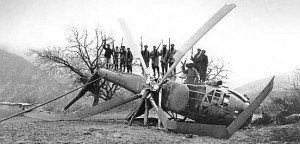Origins of Al Qaeda
This section provides a background for the history of Al Qaeda and gives context for the “Al Qaeda in the Islamic Maghreb (AQIM)” section of this blog.
1979-1989: Soviet War in Afghanistan and the beginnings of al Qaeda
The Soviet-Afghan war (December 24, 1979 – February 15, 1989) was a key element in the collapse of the Soviet Empire. The conflict was fomented by their cold war enemy the United States who secretly donated billions to the Islamic factions known as the Mujahideen, directly through the Central Intelligence Agency (CIA) and their relationship with Pakistan’s secret service, the ISI.
The true roots of Osama bin Laden’s al Qaeda network stem from this decade-long conflict. After Afghanistan was invaded by the Soviet Union, the Afghan Islamist extremists found a mobilizing call for their cause. They recruited young Muslims from around the world to come to Afghanistan and volunteer in what was being called a “holy war,” or “jihad”, against the invading Soviets. One of these young Muslims was a 23 year old from Saudi Arabia named “Usama” bin Ladin.
 Bin Laden was a Saudi spiritual leader and came from a wealthy family with ties to the Saudi Royals. He was the son of a construction magnate and he had taken to the religious sermons of Abdullah Azzam, a Palestinian and disciple of Sayyid Qutb who was a leading member of the Egyptian Muslim Brotherhood. While he participated in few actual battles in Afghanistan, bin Laden became known for his generous funding of the jihad against the Soviets.
Bin Laden was a Saudi spiritual leader and came from a wealthy family with ties to the Saudi Royals. He was the son of a construction magnate and he had taken to the religious sermons of Abdullah Azzam, a Palestinian and disciple of Sayyid Qutb who was a leading member of the Egyptian Muslim Brotherhood. While he participated in few actual battles in Afghanistan, bin Laden became known for his generous funding of the jihad against the Soviets.
However, bin Laden’s ambitions extended beyond the boarders of Afghanistan, and he began to develop a complex international organization. He set up a financial support network known as the “Golden Chain,” comprised mainly of financiers from Saudi Arabia and Persian Gulf states. With immense funds readily accessible, bin Laden and Azzam created a “Bureau of Services,” which helped channel recruits for the jihad into Afghanistan. With Saudi Arabia and the United States pouring in billions of dollars worth of secret assistance to rebels in Afghanistan to fight the Soviets,, the jihad was constantly gaining momentum.
1989-1996: Early al Qaeda attacks from Sudan
When the Soviets finally left Afghanistan in early 1989, bin Laden and Azzam decided to continue their organization, so they established “the base” (al Qaeda) as potential headquarters for future jihad. However bin Laden and Azzam disagreed about the future goals of the organization; Azzam preferred continued fighting in Afghanistan, and bin Ladin wanted to prepare al Qaeda to fight world wide. After Azzam was killed that same year, bin Ladin assumed full authority of al Qaeda.
Upon departure from Afghanistan, bin Laden was exiled by Saudi Arabia, so he decided to move to Sudan. With him came all of the headquarters and base of operations for al Qaeda. From his sanctuary of Sudan, bin Laden began connecting with more groups all over the Middle East and northern Africa. He created a network that he later would use to fight against the West.
 Beginning with a fatwa called against the United States’ deployment to Somalia, al Qaeda
Beginning with a fatwa called against the United States’ deployment to Somalia, al Qaeda  allegedly aided in drowning two Black Hawk helicopters in 1993 (picture on right), and also took credit for the bombing of the World Trade Center that same year. In 1995, al Qaeda was responsible for leaving a car bomb outside of a Saudi-U.S. joint facility in Riyadh Saudi Arabia that exploded killing at least 6 people and injuring about 60 others (see Times magazine article on left)
allegedly aided in drowning two Black Hawk helicopters in 1993 (picture on right), and also took credit for the bombing of the World Trade Center that same year. In 1995, al Qaeda was responsible for leaving a car bomb outside of a Saudi-U.S. joint facility in Riyadh Saudi Arabia that exploded killing at least 6 people and injuring about 60 others (see Times magazine article on left)
1996-2000: The rise of the Taliban resurrects al Qaeda
After these events, mounting international pressure was building and Sudan forced bin Laden to return to Afghanistan. He struggled to rebuild his organization and network however with the rise of the Taliban, bin Laden was ready to issue a fatwa against the United States and it’s citizens in 1998. By this time, al Qaeda became the headquarters for international terrorism when they merged with Egyptian Islamist Jihad, which was headed by Ayman al-Zawahri, who would become number two in command to bin Laden.
Previous acts by al Qaeda had involved training, funding and aiding other groups, however the new refuge in Afghanistan allowed for bin Laden to take his organization to the next level. Al Qaeda and bin Laden carried out the 1998 attacks on the U.S. embassies in Kenya and Tanzania and were responsible for the U.S.S. Cole in Yemen, which left 17 American sailors dead.
Sources for this section:







 This is the default footer layout. You can easily add or remove columns in the footer.
This is the default footer layout. You can easily add or remove columns in the footer.
Recent Comments